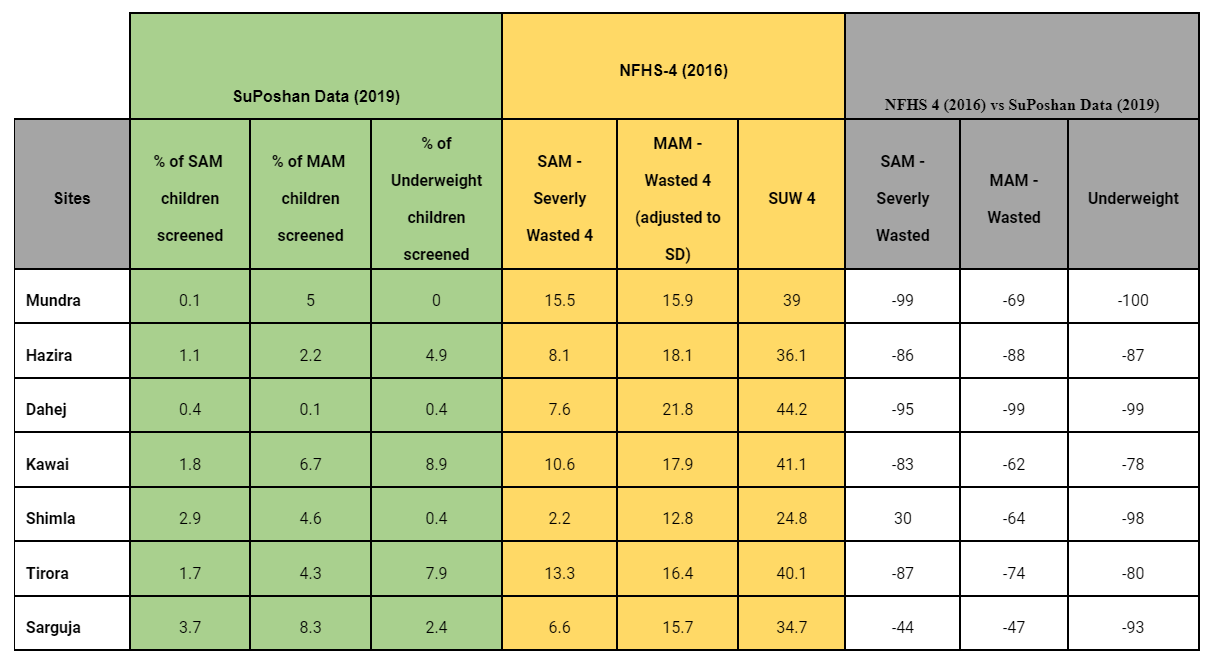Adani Wilmar Limited’s Fortune SuPoshan project, which aims to tackle malnourishment by improving nutrition levels among young children, has been successful and has contributed to a significant reduction in malnutrition indicators for women and children, an assessment report of the project has found. The findings have come when India is celebrating September month as the Nutrition Month or Poshan Maah to spread awareness related Health & Nutrition.
What is Fortune SuPoshan?
Launched in May 2016, the Fortune SuPoshan project is executed on the ground by Adani Foundation, the CSR arm of Adani Group. It is a mission against Malnutrition and Anaemia and it was operational in 10 sites Mundra, Hazira, Dahej, Kawai, Shimla, Tirora, Sarguja, Vinzhinjam, Kamuthi and Bitta across seven states, including Gujarat, Maharashtra, Kerala, Chhattisgarh, Tamil Nadu, Himachal Pradesh and Rajasthan. The CSR project will continue its operation at its existing sites by reaching the target group 0-5 age children, adolescent girls, and women in reproductive age.
The CSR project adopted a multi-stakeholder approach, including Ministry of Women and Child Development’s Poshan Abhiyaan, Integrated Child Development Scheme (ICDS), National Nutrition Mission and encompassing the local panchayats, district administration, schools, other NGOs, Anganwadi centres, local health centres and others for maximum impact.
Impact of the CSR project
All 239 villages where the Fortune SuPoshan project was operational in the first phase have shown a significant reduction in all three malnutrition indicators, i.e. severe acute malnourishment, moderate acute malnourishment, and underweight, for children aged 0-5, according to the assessment report.
In 2016, the average severe acute malnourishment, moderate acute malnourishment, and underweight levels across the 10 site districts were 8.62%, 15.78%, and 34.3% among children aged up to five as per National Family Health Survey (NFHS 4) data by the Govt. of India. After four years of intervention via the Fortune SuPoshan project, the levels at the 10 sites fell to 4.1%, 1.3%, and 2.7%, respectively as found in the Universal Anthropometric Measurement conducted by Fortune SuPoshan’s team of village volunteers called SuPoshan Sanginis at these locations in the year 2019-20. While the sites where the project was operational saw major decline, at district level the numbers have reduced substantially as was noticed in the recent NFHS 5 report.
As a result, the overall percentage for severe acute malnourishment levels reduced by 72.1% on an average across the ten sites, moderate acute malnourishment reduced by 72.2%, and the number of underweight children fell by 92.5%. (Source: Internal study conducted by Adani Foundation at 10 sites)
Why it worked
The driving force behind the Fortune SuPoshan project are the SuPoshan Sanginis, or community health volunteers who act as a guide, confidant, and a community support system to improve nutrition and health levels. The 153 SuPoshan Sanginis at the 10 sites covered 239 villages and 385 Anganwadi centres. The team conducted 15,819 group discussions, 12,711 family counselling sessions, and 1,742 other village-level events.

